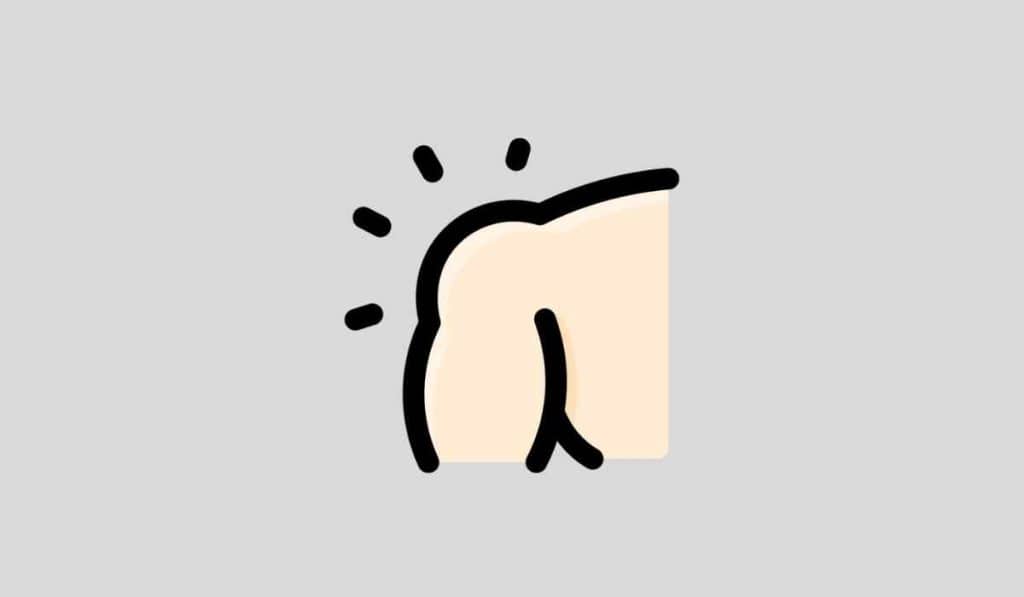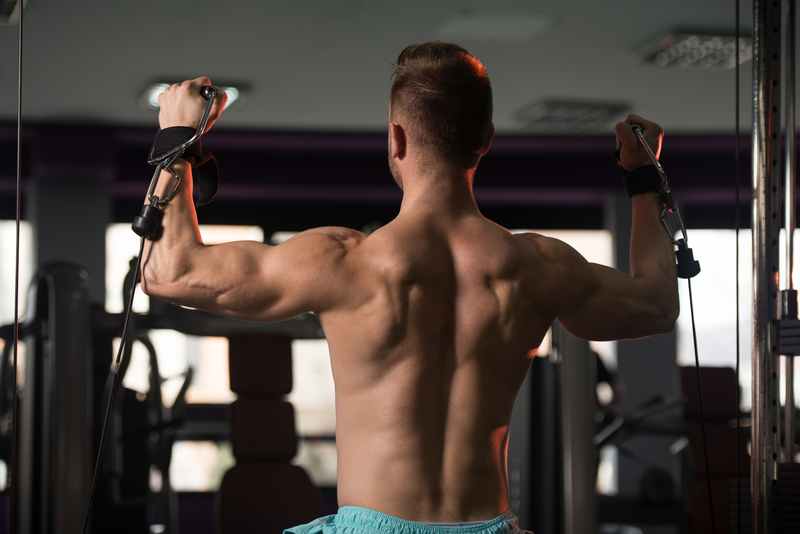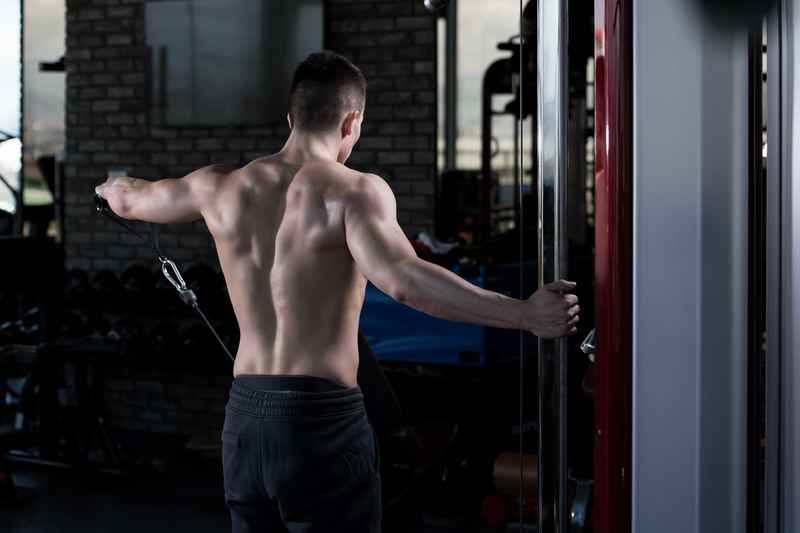Training shoulders on a cable machine is an excellent way to increase time under tension and build more muscle. Here are the best shoulder exercises you can do with a cable machine and a sample 20-minute workout for those Boulder Shoulders.

Looking to beef up those shoulders and fill out those arms?
Your shoulder muscles play a role in quite literally every upper body routine. Every push exercise engages your shoulders along with your chest and triceps, and every pull exercise works your shoulders, back, and biceps.
To put it simply: to have a stronger upper body overall, you need to develop stronger shoulders.
The cable machine is your best tool to shredding those shoulder muscles and building real strength and power.
Below, I’ll share with you a list of my all-time favorite cable machine shoulder exercises and a routine I’ve used during my athletic career to take shoulder development to the next level.
Let’s hop to it.
The Benefits of Training Shoulders on a Cable Machine
You might be wondering, “Why should I spend time training my shoulders on the cable machine when I’ve got free weights like barbells, dumbbells, and kettlebells? What’s so special about the cable machine?”
Well, I’m glad you asked…
?️More Variety
Working with the cable machine is a great way to spice things up and keep your workouts interesting!
It’s easy to get bored doing the same exercises over and over, and that boredom can lead to demotivation and less effective workouts.
But by switching things up—using the cable machine and the many cable machine attachments available to you—you can bring in plenty of variety to not only keep your workouts interesting and engaging, but also shred serious shoulder muscle (as I’ll explain in the next section!).
Increased Time Under Tension
Weightlifting and resistance training is all about A) increasing the load and B) pushing your muscles to the point of failure.
With barbells, dumbbells, and kettlebells serving as your “load,” you have to work in the right rep range to hit failure at the right time (typically by the end of your last set/end of your workout).
Cable machines allow you to work with the exact same load, but actually help you to hit failure faster/with fewer reps.
That’s because the cable machine maintains constant tension throughout the full movement, with no “rest point” at the top or bottom of each exercise (think of how you can “rest” at the top of the bench press or at the bottom of a curl).

Because of the continuous tension on your muscles, you burn through stored energy more quickly, and hit failure faster. The greater time spent under tension also increases muscle hypertrophy and leads to fractionally greater growth!
No Direct Load
When you’re holding a barbell over your chest for a bench press, there’s a lot of weight directly on your wrists, elbows, and shoulders.
Your muscles do the work of lifting it, but your skeletal system still has to do the work of supporting the weight between each rep.
With cable machines, there is no direct load on your body. The cables provide tension enough to simulate a load, and when you pull or push on the handles to lift the weight, there is the strain on your muscles.
However, between reps, there is virtually no strain on your skeletal system because the load is being supported primarily by the cable machine itself—you’re just holding the handles and keeping the weight in the air.
This makes cable machine training of all sorts, be it a leg, core, or chest cable workout, far gentler on your joints and better-suited to those with joint injuries.
More Angles for Increased Hypertrophy
With free weights, there’s really only one way you can push or pull: directly up.
Weights work because of gravity, which always pulls down (toward the core of the earth).
Sure, you can use centrifugal force when swinging a kettlebell, but at the end of the day, the angle is always some variation of straight up and down.
Not so with cable machines! Thanks to the pulley system, the machine does the work of raising the weight straight up and down.
You can push or pull against the handles in quite literally any direction, from any angle. This allows you to hit your muscles in new and creative ways that just aren’t possible with free weights.
You can develop more well-rounded musculature using a cable machine than you could with free weights alone.
Pretty easy to see why you should be including cable machine exercises into your workout, isn’t it?
Time to dive into my all-time favorite cable shoulder workouts and learn the five simple exercises that will take your training to the next level.
Best Shoulder Exercises on Cable Crossover Machine
Exercise 1: Cable Push Press
Let’s get military! Or, better said, let’s get into this cable machine alternative to military presses.
Military presses (or overhead shoulder presses) are perhaps the best for building powerful shoulders, and engage your deltoids (along with your triceps and some upper chest) very effectively.
By using the cable machine, you can increase time under tension and improve the angle of the workout to accommodate shoulder stiffness, injuries, or limited mobility.
To perform this exercise:
- Stand in the middle of the cable crossover machine, with your feet spread shoulder width apart, spine straight, and head up.
- Set the cable to the lowest level, with the standard D-handles.
- Grip the handles and bring them up to your shoulders. Point your elbows downward and keep your hands underneath the handles, ready to push up.
- Extend your arms fully, but DO NOT lock out your elbows. Use the muscles in your forearms, triceps, and shoulders to hold the arm extension.
- Lower back down under control until the handles are just above shoulder level. Pause for a 1-count, then push once more.
- Repeat as desired.
Exercise 2: Face Pull
This is one of my all-time favorite exercises to build serious posterior deltoid power, but also target the upper back (lats and traps, particularly).
It mimics the natural rowing motion, but instead of pulling up (which can increase shoulder injury risk), you pull straight toward your body/face.
This makes it far safer for your joints, but also focuses chiefly on your posterior deltoids (one of the more under-trained parts of your upper body) to develop more well-rounded shoulder strength.
To perform this exercise:
- Stand facing one of the cable machines, with your feet planted shoulder width apart and spine straight.
- Set the rope handle onto the cable machine, and adjust the level to roughly shoulder/neck height.
- Grip the rope handle in both hands with an overhand grip (palms facing down, the knobs at the end of the handle next to your pinky fingers).
- Lean back slightly to counterbalance the weight, and pull the handle toward your face.
- As your hands approach your face, shift them slightly outward so they end up on either side of your face (rather than making contact).
- Hold in this position for a 1-count to maximize muscle engagement, then slowly return your hands under control to their full extension.
- Pause at full extension for a 1-count to let the muscles relax, then pull again.
- Repeat as desired.
Exercise 3: Front and Side Raises
If you want to build powerful shoulders, you’ve got to work on all three aspects: posterior, anterior, and lateral.

This particular exercise focuses on the anterior and lateral, encouraging greater strength in the muscles that play a role in most push exercises (like bench presses and push-ups).
To perform this exercise:
- Stand with your back to the cable machine, the handle set at the lowest level (ankle height). Grip just one handle in your right hand, with the cable on the right side of your body.
- Keeping your arm straight, raise the handle directly in front of you, lifting until your hand is roughly at shoulder level.
- Lower slowly and under control until the handle is at your side, but DO NOT relax the muscles. Instead, keep them engaged to hold the handle at your side (rather than allowing it to swivel backward). This helps to max out time under tension and ensures you hit fatigue faster.
- After a 1-count pause, repeat the front raises as desired.
- Without resting or switching hands, turn so your back is to the cable machine.
- Extend your straight right arm up to the side, until your hand is on level with your shoulder.
- Lower under control, hold the handle at your side, and repeat as desired.
- Only once you finish all the reps of both front and side raises on your right hand should you switch to your left hand.
Exercise 4: Rear Delt Crossover
This is another exercise to target your posterior deltoids, and it’s one of the best for building well-rounded shoulder strength.
Plus, it can also max out active range of motion and increase your muscle strength throughout the entire range of motion. Now that’s a win-win for sure!
To perform this exercise:
- Stand in the middle of the cable crossover machine. Set the handles to the highest setting (above your head).
- Reach your right hand across to grip the handle on the left side, and your left hand to grip the right-side handle.
- Bring the handles to your starting position with your hands directly in front of your chest. The cables should cross and form an X in front of you. Your elbows should be slightly bent, too, to avoid locking out.
- Inhale deeply, then on the exhale, spread your arms wide, pulling the handles outward as far as you can. Think about it like you’re doing a chest fly, but rather than pushing the weight inward, you’re pulling it outward.
- Open your arms as wide as they can, then return under control to your starting position while inhaling.
- Repeat as desired.
Exercise 5: Cable Shrug
One last exercise to round out the workout! This one works on your traps, the muscles that help your delts to push and pull, as well as support your neck and spinal muscles.
These are the muscles that give you the “slope-shouldered” look, and will do wonders to emphasize your shoulder musculature.
To perform this exercise:
- Stand facing the cable machine, with the bar handle attached to the cable and set on the lowest level (ankle height).
- Grip the bar handle with an overhand grip (palms facing your body). Keep your arms slightly bent.
- Shrug your shoulders. Treat it like trying to touch your earlobes with your shoulder muscles. Focus on using only your traps, and avoid pulling using your shoulders and biceps. Try not to move your arms at all.
- Shrug as high as you can, then lower slowly and under control to your starting position.
- Inhale and pull again for another shrug.
- Repeat as desired.
20-Minute Shoulder Cable Machine Workout
Time to put it all together into one highly effective shoulder workout!
Cable Push Press – 4 sets of 8-12 reps, 30 seconds of rest between sets
Face Pull — 4 sets of 8-12 reps, 30 seconds of rest between sets
Front and Side Raises – 2 sets of 8-12 reps, 30 seconds of rest between sets
Rear Delt Crossovers – 3 sets of 8-12 reps, 30 seconds of rest between sets
Cable Shrug – 4 sets of 8-12 reps, 30 seconds of rest between sets
Cable Shoulder Exercises – FAQs
Can you build shoulder muscle with a cable machine?
You absolutely can! In fact, as you saw above, cable machines can actually build muscle faster than free weights because of the increased time under tension.
You also have more variety and many new angles from which to hit your shoulder muscles thanks to the pulley systems integrated into cable machines. They’re a game-changer for Shoulder Day for sure!
Are cable lateral raises better than using free weights?
Cable lateral raises work better than free weights because they maintain continuous tension throughout the entire range of motion, while free weights grow “lighter” (or at least feel that way) at the lowest point of the exercise when the natural structure of your arm is supporting them.
The Bottom Line
Using a cable machine for shoulder day is a great way to mix things up from the usual routine of using free weights like dumbbells or barbells.
Best of all, there are some advantages to training with cables that you won’t get elsewhere, including maximal time under tension.
Building those boulder shoulders is a little easier when you use the right tools.
The next time you hit the gym, step into the cable machine and take Shoulder Day to the next level.
More Cable Machine Guides Like This
⭐ 5 Best Cable Crossover Machines for Home Gyms. Crank up your workouts with the versatility of a cable crossover machine. Here are the best ones for every kind of home and garage gym.
5 Best Home Gym Pulley Systems. Pulley systems are a killer tool for better workouts. Here’s a breakdown of the top home gym pulley systems for leveling up your workouts at home.
6 Best Cable Machine Arm Exercises (Plus a 20-Minute Workout). Using a cable crossover machine is an effective way to train the biceps and triceps. Here’s a detailed look at the best cable machine exercises for stronger arms, plus a 20-minute sample workout.